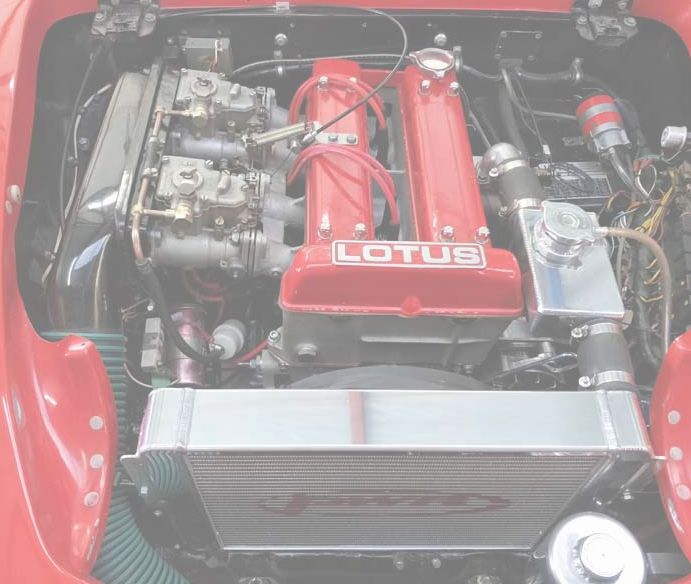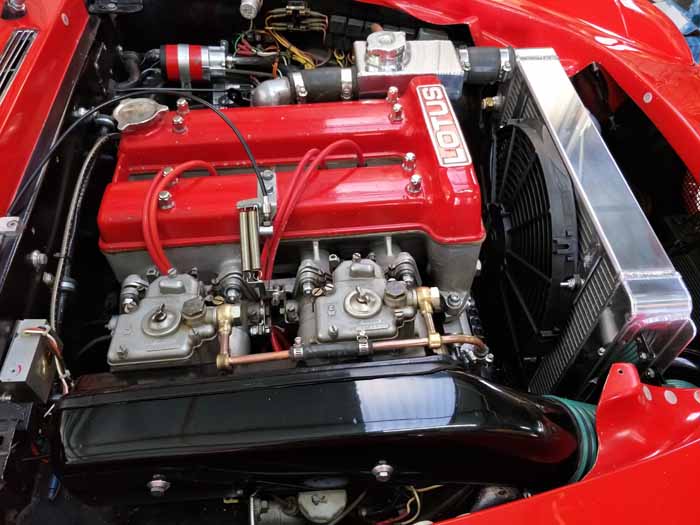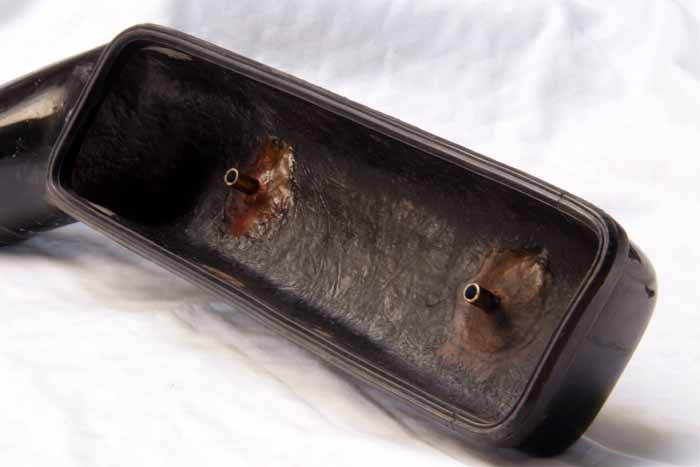
Build an efficient induction system.
Without a proper air induction system the engine simply wont perform.
Disregarding the internal engine induction components, IE, the valves and camshafts, this discussion is in regard to the external induction system, beginning with the air filter canister.
A BIG 170 horsepower twin cam thrives on one thing, and that is to have the capacity to breath in large volumes of air. If there is a restriction of some kind along the induction tunnel, the engine wont perform as expected.
There are times, when a car is purchased where many of the original parts are missing, which often leads to short cuts being taken, and things end up being not quite right.
The writers S2 elan, certainly fell into the basket of, “many original parts missing” category, which was a shame, because it definitely added to the workload and effort required to procure, or in most cases, to actually fabricate new parts, that in itself is by no means a bad thing, because it allows the freedom of choice to improve on the basic original design parameters.
So lets take a look at where the induction journey begins… at the air filter canister. You’ll realize straight away that this is a none standard lotus elan air filter canister. But its still properly English, being a modified canister from an early Triumph 2000.
Three additional breathing holes have been made in the outer canister body, just to make sure there is plenty of induction capacity. It is secured in front but to the side of the radiator with some additional brackets formed and welded to the metal canister and secured to the F/glass body with small bolts, washers, and nuts.
Note the large diameter flexible air trunking tube, it should be a neat fit (No air leaks) onto the outlet flange of the canister.

So once we move beyond the air filter canister, and the short length of flexible air trunking tube, we arrive at the cold air box which encases the ram tubes protruding from the twin 40mm Weber carbs.
This is where the real action begins for the air and fuel charge the engine will burn in order to produce the required horse power at any given throttle opening. If your twin cam engine was dyno’d at 160BHP at the flywheel at 6,800RPM, remember that at half engine speed or less, the developed/quoted engine power is no where near what the dyno indicated.

The cold air box shown above is a DIY fibreglass fabrication. The sheet metal backing plate is also a DIY sheet metal fabrication, all very carefully made so that everything fits together in a professional manner. The rubber seal between the outer F/glass air-box and the backing plate is a neoprene rocker cover gasket from an early K series Toyota Corolla engine, this particular seal has provided more than two decades of service so far, with no sign of deterioration.
Note that the fibre glass cover does not taper in width towards the rear like the original covers do, and it is actually quite a bit wider than the standard air box cover to provide a greater distance between the inside surface of the cover and the outer rim of the ram tubes, a very handy feature if longer ram tubes are required, longer ram tubes help to improve the low down/mid range engine torque.

No, these are not down draft Weber carbs, just the normal twin 40 DCOE sitting vertically on the bench to provide a better view of the air box arrangement. What we want to point out here is the special brackets that were installed to make the remove and re-install of the air box cover much easier than the original set up.
I bet you wouldn’t be the last elan owner to cuss at trying to line up the bolts and the threaded spigot on the backing plate, yes, its a pain isn’t it… well, let us show you a fix. But first take note of the brackets sitting between the ram tubes before moving on.

OK, probably best to include a close up of the bracket to understand how this is done. A longish post is machined and threaded from mild steel round, and a couple of mild steel sheet metal straps are brazed on to support the post. That’s pretty simple.

The tubes protruding from the inside of the cover are machined and drilled aluminium pieces which are bonded with fibreglass resin to hold them securely in place. When the cover is offered up to the back plate assembly, the guides match the threaded spigots attached to the back plate, and there is absolutely no need to fiddle and shuffle bolts in order to pick up the threads, they just go straight in first time.

There you have it, a robust and well designed and easy to dismantle and re-assemble twin cam lotus induction system.
We could probably enlarge on this story quite a lot… such as, how to fabricate the sheet metal backing plate, which are getting very expensive to buy, and also the fibreglass outer air box cover are not exactly cheap either. Not to mention the custom DIY made chromed ram tubes… made with simple tools, and old school metal spinning techniques. We should note also that the cold air box cover and the outer lips of the ram tubes have about 20mm clearance, or air space between to promote excellent air flow induction.
Learn more here.
Possessing the practical mechanical skills to enable oneself to build, fabricate and present professional quality items, will potentially save a huge wad of money on all classic restoration work, and who knows, it may lead to establishing a part time business making parts for others.
A word or two about tuning the carbs with a proper induction system. Always tune the carbs with the complete induction system installed… never ever tune the Weber carbs with just the bare trumpets… and when we say tune, we mean putting the car on a rolling road dyno, where real on road driving conditions can be replicated.
The writer has always used this system, and it has never failed to deliver extremely well tuned Weber carbs.
Then once the Weber carbs are correctly set up, it is only a matter of maintaining and keeping them properly adjusted for best possible performance.
Final Note: This article has been written to outline the problems that can be encountered where original parts are not available. It is not intended to denigrate the original elan induction system, if your twin cam performs as expected with the standard set up, then expect that not much else can do done to improve things.